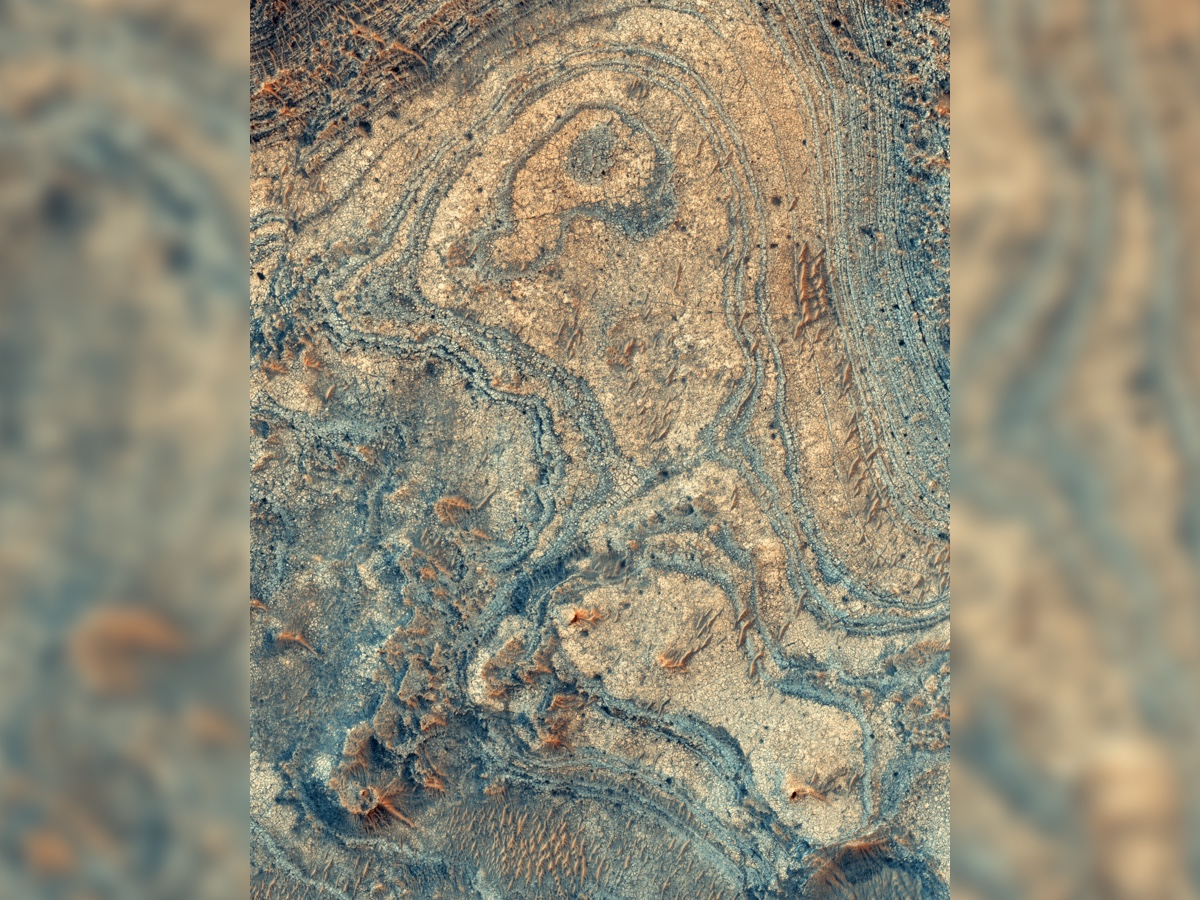This Strange Rock Formed on Mars Billions of Years Ago, Possibly from an Explosive Eruption

Next year, NASA will launch a new Mars rover, one equipped to determine whether the Red Planet ever hosted life — but it could also determine how violently Martian volcanoes erupted during the planet's geologic heyday.
Mars was no stranger to volcanic eruptions, as its largest mountain, Olympus Mons, attests. But scientists don't yet know whether the planet also sported powerful explosive eruptions in the past, events more like Mount St. Helens than Kilauea. Now, a team of scientists has argued that a particular mineral deposit — one that the Mars 2020 rover should be able to study — suggests these explosive eruptions did occur.
"This is one of the most tangible pieces of evidence yet for the idea that explosive volcanism was more common on early Mars," lead author Christopher Kremer, a graduate student in planetary science at Brown University, said in a statement. "Understanding how important explosive volcanism was on early Mars is ultimately important [to] understand the water budget in Martian magma, groundwater abundance and the thickness of the atmosphere."
Related: Mars Volcano Views Revealed by Spacecraft (Photos)
The Nili Fossae region also houses some truly incredible rocks, as it turns out. The area is particularly rich in a mineral called olivine, which typically occurs in the heart of planets, not their surfaces. And there's also a range of rock types, including serpentine and carbonate, that indicate there used to be water around, the authors wrote.
But it was the olivine in particular that caught the scientists' eyes. Given the mineral's usual location deep within planets, all that olivine-rich rock lying on top of perfectly normal, olivine-poor rock suggests that something big happened here between 3.6 billion and 4 billion years ago.
Perhaps a large rock collided with Mars here and excavated olivine from the planet's interior. However, scientists know the olivine can't have come from the crash that formed the most prominent impact crater in the area, because the mineral lies above that crater. That makes a volcano the more likely explanation for how olivine got to the surface.
Sign up for the Live Science daily newsletter now
Get the world’s most fascinating discoveries delivered straight to your inbox.
But volcanoes can erupt in two different ways: so-called effusive eruptions, which star molten rock, and explosive eruptions, which are driven by gas buildup inside the volcano. Effusive eruptions produce more lava; explosive eruptions produce more ash.
So the researchers used data gathered by a few different Mars Reconnaissance Orbiter instruments to measure the thickness of the olivine-rich formations across the region. The scientists found apparently layered patches spread across the underlying terrain, including on top of steep crater walls. But even over steep elevation changes, the layers kept a fairly consistent thickness.
That doesn't match what scientists expect from a lava-rich eruption, since lava would settle into a flatter surface as gravity acted on the liquid. So these findings suggest that the eruption was instead explosive and produced ash.
"This work departed methodologically from what other folks have done, by looking at the physical shape of the terrains that are composed of this bedrock," Kremer said. "What's the geometry, the thickness and orientation of the layers that make it up? We found that the explosive volcanism and ash-fall explanation ticks all the right boxes, while all of the alternative ideas for what this deposit might be disagree in several important respects with what we observe from orbit."
Of course, the view from orbit offers only so much precision. That's why Kremer and his colleagues are looking forward to when the Mars 2020 rover touches down near the olivine-rich formation. They hope the robot will take the time to study the rocks directly, which should give scientists a better sense of how this material formed.
"What's exciting is that we'll see very soon if I'm right or wrong," Kremer said. "So that's a little nerve-wracking, but if it's not an ash fall, it's probably going to be something much stranger. That's just as fun, if not more so."
The research is described in a paper published May 22 in the journal Geology.
- Jezero Crater or Bust! NASA Picks Landing Site for Mars 2020 Rover
- Tour Jezero Crater! Fly Over the Landing Site of NASA's Next Mars Rover (Video)
- NASA's Mars Helicopter Whirls Through Tests on Way to 2020 Launch
Email Meghan Bartels at mbartels@space.com or follow her @meghanbartels. Follow us on Twitter @Spacedotcom and on Facebook.
Meghan is a senior writer at Space.com and has more than five years' experience as a science journalist based in New York City. She joined Space.com in July 2018, with previous writing published in outlets including Newsweek and Audubon. Meghan earned an MA in science journalism from New York University and a BA in classics from Georgetown University, and in her free time she enjoys reading and visiting museums. Follow her on Twitter at @meghanbartels.










